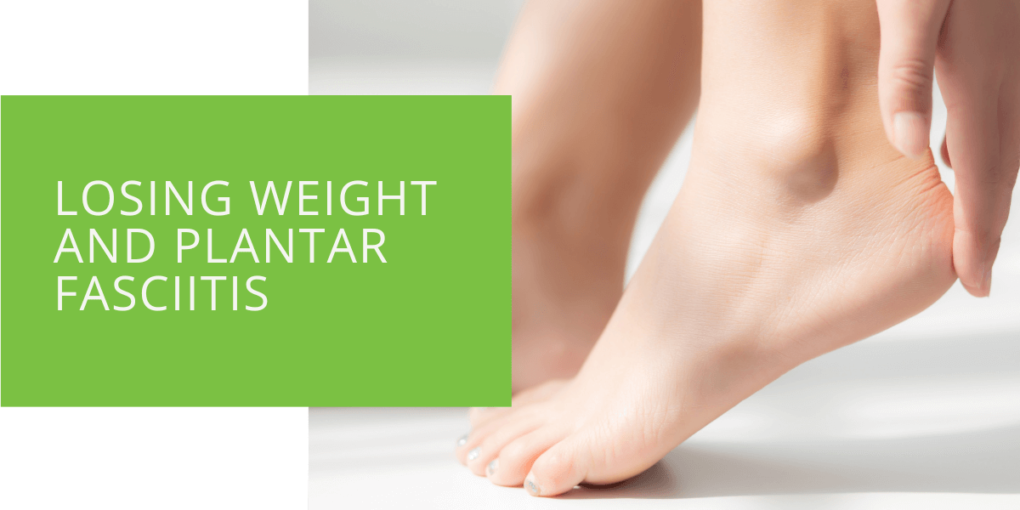Losing Weight and Plantar Fasciitis
Are you struggling to lose weight while also dealing with the painful symptoms of plantar fasciitis? If so, you're not alone. Plantar fasciitis is a common cause of heel pain, and excess body weight can worsen the condition. However, achieving a healthy weight is important for overall health and well-being. In this article, we'll provide tips and strategies for losing weight with plantar fasciitis. You can achieve weight loss goals without worsening your foot pain by following a healthy diet and incorporating low-impact exercises.
What is Plantar Fasciitis, and How Does it Affect Weight Loss?
Plantar fasciitis is a condition that causes pain in the heel and bottom of the foot. It occurs when the plantar fascia, a thick band of tissue that connects the heel bone to the toes, becomes strained or inflamed. The plantar fascia helps to support the arch of the foot and plays a key role in walking and other weight-bearing activities.
Symptoms include pain in the heel or bottom of the foot, especially when standing or walking after rest. The pain is often worse in the morning or after prolonged periods of sitting. Other symptoms may include tenderness on the bottom of the foot, swelling in the foot or ankle, and difficulty flexing the foot.
Excess body weight, including obesity, can put additional strain on the plantar fascia and worsen the symptoms. Being overweight or obese is one of the main risk factors for developing plantar fasciitis. This is because extra body weight places additional pressure on the feet, ankles, and lower legs, leading to inflammation and pain.
If you're overweight or obese and struggling with plantar fasciitis, you must consider losing weight as part of your treatment plan. Losing weight can help to reduce the strain on your feet and ankles, relieving pain and improving mobility. However, it's important to approach weight loss safely and sustainably, as rapid weight loss or extreme dieting can worsen symptoms.

Tips for Losing Weight with Plantar Fasciitis
If you're considering losing weight to help manage plantar fasciitis, it's important to consult a healthcare professional, such as a podiatrist, before starting a weight loss plan. A podiatrist is a medical professional specialising in diagnosing and treating foot and ankle conditions. A podiatrist can assess your individual needs, including your body mass index (BMI) and any underlying health conditions like diabetes, and guide a safe and effective weight loss plan.
Once you have the green light from a healthcare professional, there are several strategies you can use to lose weight with plantar fasciitis. Here are a few tips to get you started:
- Choose low-impact exercises: High-impact exercises like running or jumping can worsen symptoms and should be avoided. Instead, opt for low-impact exercises like swimming, cycling, or using an elliptical machine. These activities can help you burn calories and lose weight without putting unnecessary strain on your feet.
- Incorporate stretching and strengthening exercises for the feet and ankles: Stretching and strengthening exercises can help to improve flexibility and support in the feet and ankles, reducing pain and improving mobility. Some examples of stretches and strengthening exercises for plantar fasciitis include calf stretches, toe stretches, and ankle strengthening exercises. Consult a healthcare professional or physical therapist for guidance on specific exercises appropriate for your needs.
- Use proper footwear and inserts: Proper footwear and inserts can help to support the feet and reduce strain on the plantar fascia. Look for shoes with good arch support, a cushioned sole, and a deep heel cup. Orthotic inserts, which are inserts placed inside the shoe to provide extra support, may also be helpful. Your podiatrist can recommend specific footwear and inserts that are appropriate for your needs.
- Gradually increase activity level: If you're new to exercise or returning to physical activity after a period of inactivity, it's important to gradually increase your activity level to avoid worsening plantar fasciitis symptoms. Start with short, low-impact workouts and gradually increase the intensity and duration as your body becomes accustomed to the new activity.

Diet and Plantar Fasciitis
A healthy diet is an important part of any weight loss plan, and it's no different when it comes to losing weight with plantar fasciitis. In addition to helping you achieve your weight loss goals, a healthy diet can also support the health and healing of your feet.
Regarding plantar fasciitis, focusing on nutrient-dense foods rather than empty calories is important. This means choosing foods high in nutrients like vitamins, minerals, and antioxidants and low in added sugars, unhealthy fats, and processed ingredients. Some examples of nutrient-dense foods that may be beneficial for plantar fasciitis include:
- Fruits and vegetables: These foods are high in antioxidants and other nutrients that can help to reduce inflammation and support overall health. Aim for various colorful fruits and vegetables to get a wide range of nutrients.
- Whole grains: Whole grains, like quinoa, brown rice, and oats, are high in fiber and other nutrients that can support weight loss and improve overall health. Choose whole grains over refined grains, which are stripped of many of their nutrients during processing.
- Lean proteins: Lean proteins, like chicken, turkey, fish, and tofu, can help to build and repair tissues, including the plantar fascia. Choose lean proteins over high-fat meats and processed proteins like deli meat and hot dogs.
- Healthy fats: Healthy fats, like those found in avocados, nuts, and olive oil, can help to reduce inflammation and support overall health. Choose healthy fats over unhealthy fats like trans fats and saturated fats.
In addition to choosing healthy foods, it's also important to stay hydrated. Proper hydration is essential for overall health and can also support your feet' health. When you're dehydrated, your body may not have enough fluids to support the tissues in your feet, leading to inflammation and pain. Aim to drink at least 6-8 ounces of water daily to stay hydrated.

Other Factors to Consider
In addition to diet and exercise, there are a few other factors to consider when it comes to losing weight and managing plantar fasciitis:
- Stress and sleep: Stress and lack of sleep can affect weight loss and worsen symptoms. Chronic stress can lead to weight gain and increase inflammation in the body, while lack of sleep can affect hormone levels and metabolism. Try to manage stress through techniques like meditation, yoga, or exercise, and aim for 7-9 hours of sleep per night.
- Consistency and patience: Losing weight and managing plantar fasciitis can be challenging, and it's important to be consistent and patient in your approach. Don't expect to see results overnight; don't get discouraged if you experience setbacks. Focus on making sustainable lifestyle changes rather than quick fixes, and be patient as your body adjusts to the new changes.
Conclusion
Losing weight can be a challenging process, but it's important to prioritize your overall health and well-being. You can achieve weight loss goals by following a healthy diet and incorporating low-impact exercises while managing plantar fasciitis. Don't forget to consult with a healthcare professional, like a podiatrist, and consider other factors like stress and sleep to support your weight loss journey and foot health. With patience and consistency, you can successfully lose weight and relieve plantar fasciitis pain.

